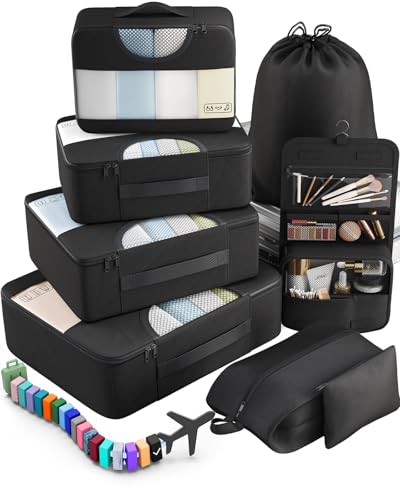In Sweden, they use Type C and F power plugs and outlets. The voltage is 230V, and the frequency is 50Hz.
So, you’ll need a travel adapter in Sweden. Their plugs and outlets are different from the Type A and B ones we use back in the States.
Quick Overview of the Plugs in Sweden:
- Plug type in Sweden: C and F
- Standard voltage: 230V
- Frequency: 50Hz
- Need a travel adapter? Yes, you do need a travel adapter
- Need a voltage converter? May be required for certain electronics
- Recommended plug adapter: One Beat International Power Adapter
This page combines official data from local electricity agencies, international IEC standards, and firsthand experiences shared by travelers who recently visited these countries.
The Only Travel Adapter You’ll Need in Sweden
Not all travel adapters are created equal, and picking the wrong one can be a costly mistake. We don’t sell them, but we’ve carefully tested and compared the best options for Sweden—looking at voltage, safety, outlet compatibility, and charging speed. This one is our top choice:
Recommended Travel Plug Adapter
by 6,500+ travelers on Amazon
If you’re traveling or already at your destination and missing a power adapter, you’ll probably be fine—most airports or stores have them. But bringing your own from home means less stress, better quality, and no need to settle for whatever’s on the shelf.
People visiting Sweden often also explore Denmark, Norway, and Finland. It’s smart to check outlet types in each country.
Power Outlets in Sweden
In Sweden, they use Type C and F power plugs and outlets.
Type C

Type C outlets have two round prongs and no grounding pin. Type E and F plugs usually fit too, but grounded plugs will need an adapter.
Type F

Type F outlets have two round prongs and grounding clips on the sides. Type C and E plugs will also fit.
Do You Need a Voltage Converter?
You’ll probably need a voltage converter in Sweden since your device’s voltage has to match the local power supply. In the U.S., we use 120V, but Sweden operates on a different voltage, so a converter is required.
Before plugging in your device while traveling, always check your device’s voltage label. If it says “100-240V, 50/60 Hz”, your device will work in most countries without the need for a voltage converter. This is common for modern electronics like laptops, tablets, and rechargeable devices.

Which Travel Devices May Need a Converter?
Don’t want to guess which converter works? Here are the best-reviewed ones worth checking out.
| Device | Need Converter? | Notes |
|---|---|---|
| Phone | ❌ No (usually) | Most modern phone chargers are dual voltage (100–240V) |
| Laptop | ❌ No (usually) | Check the power brick label for 100–240V |
| Hairdryer | ✅ Yes (often) | High wattage; many models are not dual voltage |
| Electric toothbrush | ⚠️ Check voltage | Some models are 110V only |
| Camera / DSLR | ❌ No (usually) | Most chargers are dual voltage |
| Power bank | ❌ No | Charges via USB, adapter is enough |
| Electric shaver / trimmer | ⚠️ Check voltage | Older or cheaper models may not support 230V |
| Tablet / iPad | ❌ No | All models are dual voltage |
| Portable fan | ✅ Yes (sometimes) | Many models are not compatible with 230V |
| Game console | ⚠️ Check voltage | Newer consoles like PS5 and Xbox are often dual voltage — check to be sure |
| Bluetooth speaker | ❌ No (usually) | Charges via USB |
| E-reader (Kindle, etc.) | ❌ No | USB charging only, no converter needed |
Top Travel Essentials to Pack
Having the right gear can mean the difference between smooth travel and avoidable hassle. These are worth packing.
Digital Luggage Scale
Packing Cubes
Power Bank
More About Sweden
Uppsala is a laid-back university town home to the oldest university in Scandinavia (established in 1477) and Scandinavia’s tallest cathedral—a Gothic landmark at nearly 390 ft. Just north is Gamla Uppsala, where Bronze- and Iron-Age burial mounds loom large—ancient feats that pre-date Vikings and hint at royal rituals. The city mixes history, sustainability, and campus-town charm—great cafés, bike lanes, river walks—easygoing and scholarly.
Check out Gustavianum museum with Sweden’s second-oldest anatomical theater, and find runestones around town dating back to Norse-Christian transitions. On spring nights students conduct the “Flogsta scream” from dorm windows—a loud, local ritual that’s quirky and oddly comforting.
It’s walkable, sweetly historic, and scientifically rich thanks to Carl Linnaeus’s legacy—his home and gardens are preserved for curious visitors. Uppsala mixes medieval roots with modern student life—chilled, curious, and character-filled.
Top places to visit in Sweden: Stockholm, Gothenburg, Malmö, and Uppsala.




